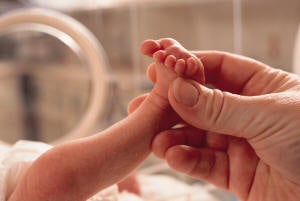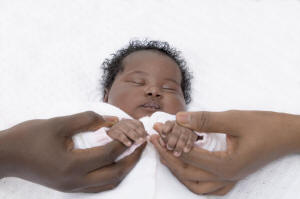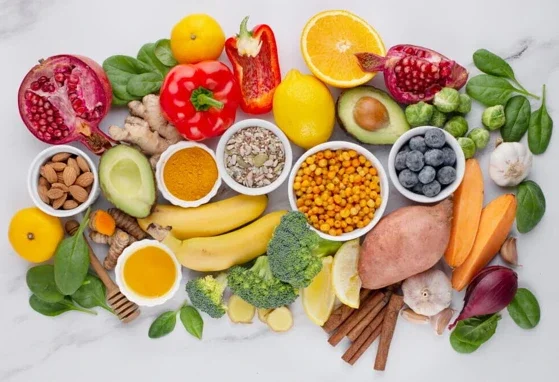Building baby’s microbiome


There is a growing body of evidence which indicates that maternal-foetal transmission of microbiota begins during pregnancy and is influenced by many factors, such as mother’s health and diet, genetics, obesity and smoking status, as well as the use of antibiotic agents during pregnancy.1 Additionally, mode of delivery, skin-to-skin contact, breastmilk or formula feeding are also all significant on the composition of the infant’s microbiome, post-pregancy.1,2 & 3
Most importantly, this growing body of research reports that the composition and development of the microbiota during early life influences risk factors related to health, during childhood and into adulthood.1
Mother’s health & diet
From conception, the mother’s microbiota may influence foetal growth and duration of pregnancy.4 During pregnancy, optimising maternal oral health, hygiene and nutrition can advance the health of the microbiome in the mouth, vagina, and gut.4 This ensures improved foetal growth by preventing inflammatory stimuli or translocation of bacteria and toxins to the foetus.4
 Mode of delivery
Mode of delivery
The neonate is exposed to a wide array of microbes from a variety of sources during birth, including maternal bacteria.5 Caesarean section results in an altered microbial composition in the neonate, which resembles that of the mother's skin (where Staphylococcus, Corynebacterium and Propionibacterium spp. dominates).5 In comparison, vaginally delivered infants have a microbiome which is similar to that from the mother's vagina, which have a predominance of Lactobacillus, Prevotella or Sneathia spp.5
African challenges
When considering the sub-Saharan Africa (SSA) region, where young women aged 15–24 years account for 25% of new HIV infections worldwide, vaginal birth can present its own risks.6 In a recent Ugandan study, highly diverse cervicotype (CT4) was associated with inflammation, a known catalyst of HIV acquisition and transmission, within pregnant women regardless of HIV sero-status.7
A similar situation was observed in South Africa, where a study identified a specific vaginal cervicotype, commonly found in healthy South African women, which causes localised inflammation.8 Such inflammation triggers an activation of antigen-presenting cells and vaginal recruitment of HIV target cells.8 In turn, more research on the topic is required as a better understanding of vaginal microbiota in different physiological states is key to the development of effective microbicides.7
Kangaroo-care (skin-to-skin contact)
 Immediate skin-to-skin contact provides the initial colonisation of the baby's microbiome once outside of the mother, through the teeming of the mother's skin bacteria.3 As the colonisation after caesarean surgery does not match vaginal colonisation9, skin-to-skin may be of extra importance in these cases.3
Immediate skin-to-skin contact provides the initial colonisation of the baby's microbiome once outside of the mother, through the teeming of the mother's skin bacteria.3 As the colonisation after caesarean surgery does not match vaginal colonisation9, skin-to-skin may be of extra importance in these cases.3
UNICEF’s sustainable developments & breastfeeding
Breastfeeding babies from birth to at least 6 months of age has long been recognised to deliver numerous health benefits to babies and mothers.10 Recent findings have highlighted that breastfed babies have increased intelligence and an improved gut health that actively fights disease and improves nutritional status.10 These findings have led experts to promote exclusive breastfeeding as a fundamental driver in achieving the Sustainable Development Goals by 2030.10
For example: 11
- Goals 1, 8 and 10 (Focus: ending poverty, promoting economic growth & reducing inequalities)
- Globally, nearly 600 000 children & 100 000 women die each year due to inadequate breastfeeding.12
- Such preventable deaths, combined with cognitive losses & health system costs of inadequate breastfeeding leads to over $340 billion in economic losses, annually.12
- In turn, breastfeeding is associated with adding additional income to the world economy.13
- Goals 2 and 3 (Focus: hunger, health & well-being)
- Breastfeeding is a vital source of nutrition that can save children’s lives while contributing to improved health outcomes for children & mothers.
 Goal 4 (Focus: education)
Goal 4 (Focus: education)
- Breastfeeding is associated with higher IQs and educational attainment can contribute to efforts to achieving global learning targets.
- Goal 5 (Focus: gender equality)
- Breastfeeding is linked to critical equality issues including birth spacing & workplace rights.
- Goals 12 (Focus: sustainable consumption)
- Breastmilk does not require industry for production & is created & consumed with a minimal ecological footprint.
- Breastmilk does not require industry for production & is created & consumed with a minimal ecological footprint.
If exclusive breastfeeding is not possible, the composition of infant formula should include ingredients such as Human Milk Oligosaccharides (HMOs) to stimulate the development of a bifidobacterial-dominated gut microbiota.1 The main components in breastmilk that stimulates the growth of specific bifidobacterial, which are often recognised in breastfed infants, are HMOs.1
Pet power
 It is now believed that a 'dirty' environment can enrich a baby's microbiome and lessen the risk of developing various diseases and conditions from obesity to asthma.11 For example, with 2 decades of research on the topic, it has been found that children who grow up with dogs, in comparison to those who don’t, tend to have lower rates of asthma.13
It is now believed that a 'dirty' environment can enrich a baby's microbiome and lessen the risk of developing various diseases and conditions from obesity to asthma.11 For example, with 2 decades of research on the topic, it has been found that children who grow up with dogs, in comparison to those who don’t, tend to have lower rates of asthma.13
Many researchers have attributed this finding to the hygiene hypothesis – the theory that exposure to a little dirt early in life can help ward off allergic diseases that may appear later in life.11 Researchers discovered that infants living with pets had a higher diversity of microbes in their guts (as was measured in their faeces) than infants without pets.13
The immune system has been shown to develop alongside the gut microbiome.13 This means that if infants grow up with limited exposure to microbes (such as those found in dog fur/ on muddy paws), the child's immune system may recognise those particles worthy of attack.13 Many researchers have also confirmed that exposure to a little dirt (whether this be through siblings, growing up on a farm or living in a developing country) can be beneficial and even ward off disease.13
Tips for new parents:
 Ensure mother’s nutritional needs are met, pre-, during & post-pregnancy
Ensure mother’s nutritional needs are met, pre-, during & post-pregnancy- Ensure optimised maternal oral health & hygiene during pregnancy
- Encourage & support exclusive breastfeeding for 6 months (and continued breastfeeding up to 2 years of age)
- If breastfeeding is not an option, discuss appropriate infant formula options with a dietitian
- Practise skin-to-skin contact (the kangaroo-care method) for the first year of life
- Expose baby to “a little dirt” via pets, siblings, farm visits or time outside
Conclusion
By building and boosting baby’s microbiome, using the tips and practices above, parents can help their children reduce childhood and adulthood disease risks. These efforts also help meet the Sustainable Development Goals by 2030.
References:
- Vandenplas, Y., Carnielli, V., Ksiazyk, J., Luna, M., Migacheva, N., Mosselmans, J., Picaud, J., Possner, M., Singhal, A. and Wabitsch, M., 2020. Factors affecting early-life intestinal microbiota development. Nutrition, 78, p.110812.
- Kashtanova, D., Popenko, A., Tkacheva, O., Tyakht, A., Alexeev, D. and Boytsov, S., 2016. Association between the gut microbiota and diet: Fetal life, early childhood, and further life. Nutrition, 32(6), pp.620-627.
- Widström, A., Brimdyr, K., Svensson, K., Cadwell, K. and Nissen, E., 2019. Skin‐to‐skin contact the first hour after birth, underlying implications and clinical practice. Acta Paediatrica, 108(7), pp.1192-1204.Robertson, R., Manges, A., Finlay, B. and Prendergast, A., 2019. The Human Microbiome and Child Growth – First 1000 Days and Beyond. Trends in Microbiology, 27(2), pp.131-147.
- Robertson, R., Manges, A., Finlay, B. and Prendergast, A., 2019. The Human Microbiome and Child Growth – First 1000 Days and Beyond. Trends in Microbiology, 27(2), pp.131-147.
- Dominguez-Bello, M., Costello, E., Contreras, M., Magris, M., Hidalgo, G., Fierer, N. and Knight, R., 2010. Delivery mode shapes the acquisition and structure of the initial microbiota across multiple body habitats in newborns. Proceedings of the National Academy of Sciences, 107(26), pp.11971-11975.
- Karim, S. and Baxter, C., 2019. HIV incidence rates in adolescent girls and young women in sub-Saharan Africa. The Lancet Global Health, 7(11), pp.e1470-e1471.
- Bayigga, L., Nabatanzi, R., Ssekagiri, A., Kateete, D., Sekikubo, M., Anderson, D., Xu, J., Kwon, D. and Nakanjako, D., 2020. Diverse vaginal microbiome was associated with pro-inflammatory vaginal milieu among pregnant women in Uganda. Human Microbiome Journal, 18, p.100076.
- Anahtar, M., Byrne, E., Doherty, K., Bowman, B., Yamamoto, H., Soumillon, M., Padavattan, N., Ismail, N., Moodley, A., Sabatini, M., Ghebremichael, M., Nusbaum, C., Huttenhower, C., Virgin, H., Ndung’u, T., Dong, K., Walker, B., Fichorova, R. and Kwon, D., 2015. Cervicovaginal Bacteria Are a Major Modulator of Host Inflammatory Responses in the Female Genital Tract. Immunity, 42(5), pp.965-976.
- Chu, D., Ma, J., Prince, A., Antony, K., Seferovic, M. and Aagaard, K., 2017. Maturation of the infant microbiome community structure and function across multiple body sites and in relation to mode of delivery. Nature Medicine, 23(3), pp.314-326.
- Unicef.cn. 2016. Increasing breastfeeding is a fundamental driver in achieving the Sustainable Development Goals. [online] Available at: <https://www.unicef.cn/en/press-releases/increasing-breastfeeding-fundamental-driver-achieving-sustainable-development-goals> [Accessed 5 August 2021].
- Worldbreastfeedingweek.org. 2016. [online] Available at: <https://worldbreastfeedingweek.org/2016/pdf/BreastfeedingandSDGsMessaging%20WBW2016%20Shared.pdf> [Accessed 6 August 2021].
- Aliveandthrive.org. 2021. The Cost of Not Breastfeeding. [online] Available at: <https://www.aliveandthrive.org/en/the-cost-of-not-breastfeeding> [Accessed 11 August 2021].
- Gupta, S., 2017. Microbiome: Puppy power. Nature, 543(7647), pp.S48-S49.
If you liked this post you may also like




